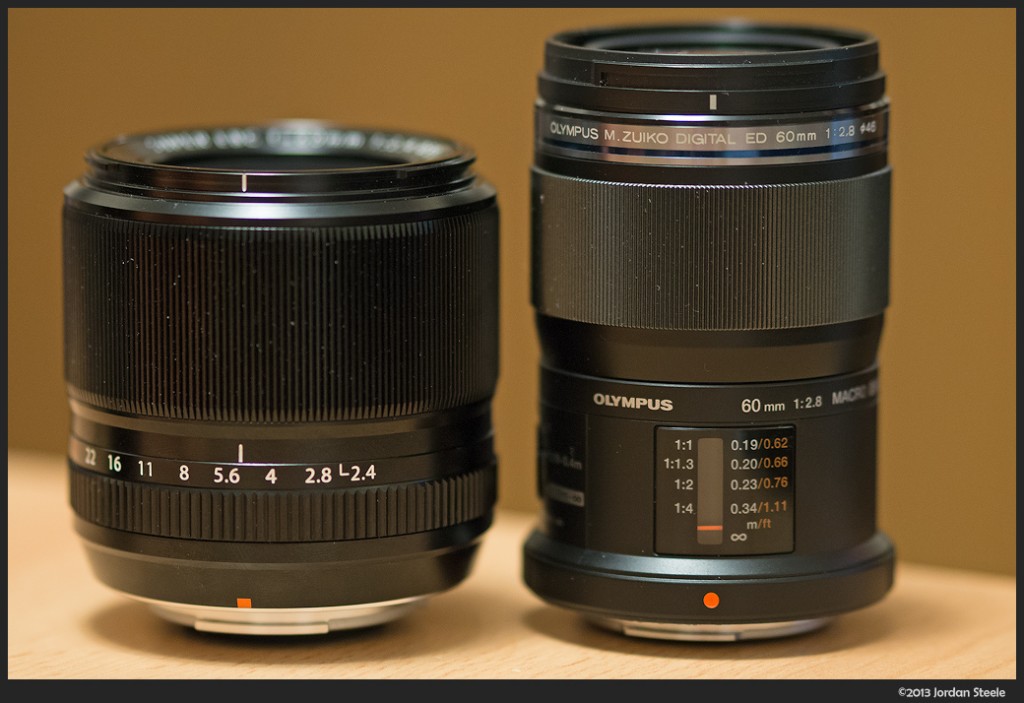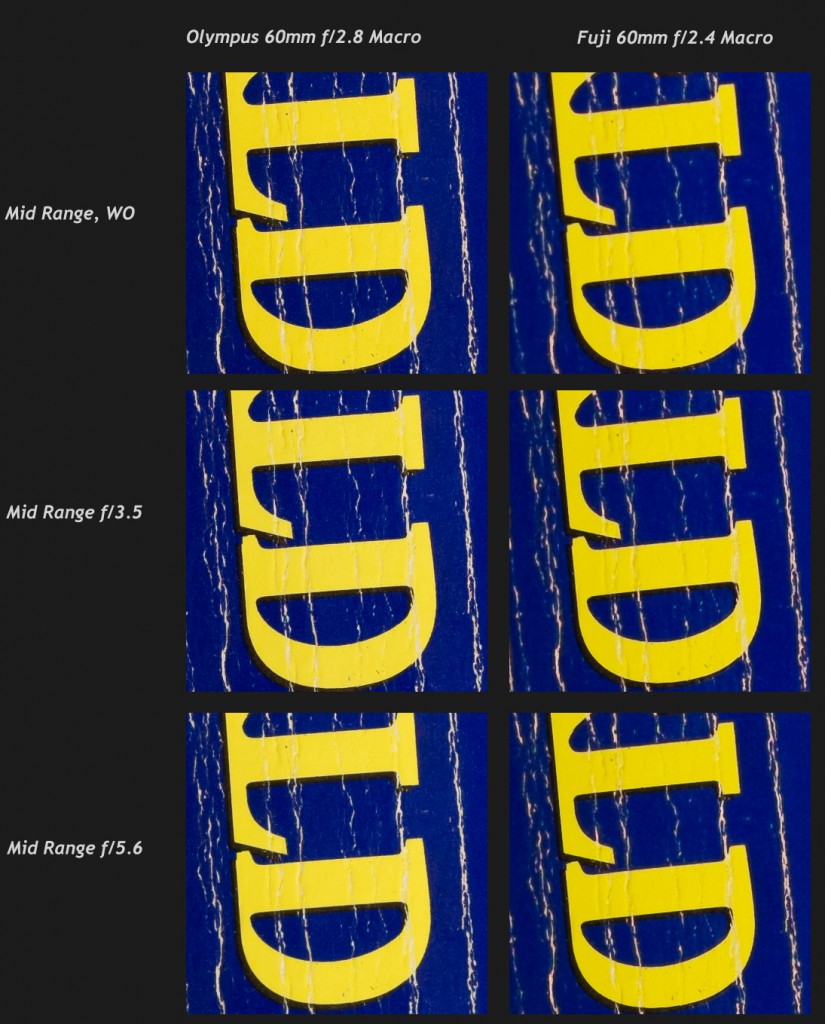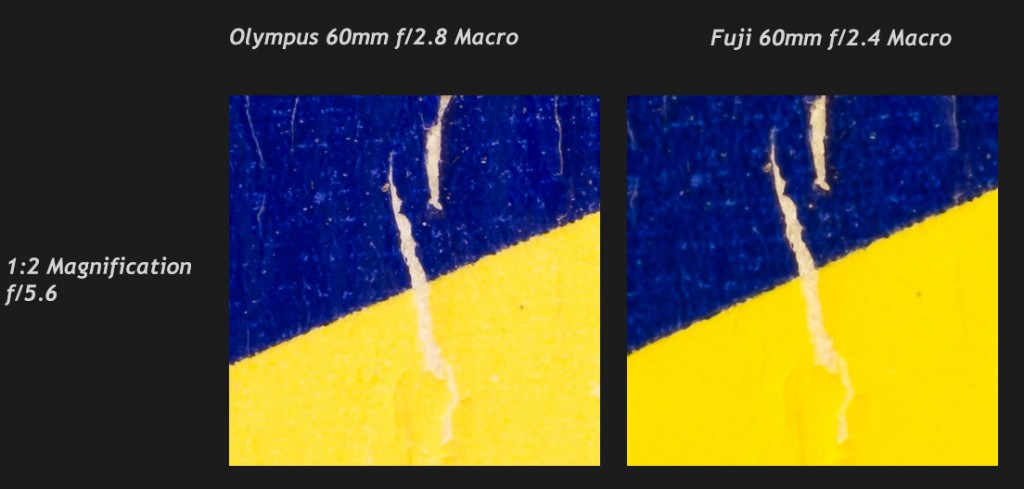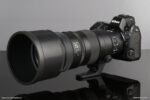Last night I decided to do a quick test between the Olympus 60mm f/2.8 Macro on the OM-D and the Fuji 60mm f/2.4 Macro on the Fuji X-E1. Both are the same focal length (but give a little different fields of view due to the different sensor sizes), similar in aperture and both are macro lenses. This first test is simply testing central resolution at about 4 feet and at 1:2 macro. Due to the fact that this was simply a quick test, I didn’t have the time to completely ensure that the camera was 100% square to the frame, so I didn’t want to compare edges on this shot (even though they do look in focus at the same spot). I will be doing more extensive comparison between the two (and between the Fuji 60 and the Olympus 45mm) in the coming weeks, but for now, let’s take a look at center resolution.
The Lenses

The Fujinon 60mm f/2.4 R Macro is a solidly build lens made of metal, with a metal focus ring and metal aperture ring. It’s solid as a rock and feels wonderful in the hand. It uses a lens extension focus system, and focus is relatively slow, though not too bad when shooting at non-macro distances in good light. The inner focusing barrel will extend during focusing, protruding about an inch when focused to 1:2 magnification, which is its maximum magnification. While the lens doesn’t contain a focus limit switch, the camera’s ‘macro mode’ effectively acts as a sort of loose one, telling the lens where a subject is most likely to be in the focus range. On the X-E1’s APS-C sensor, 1:2 magnification will fill the frame with an object approximately 47mm wide.
The Olympus 60mm f/2.8 Macro is also quite solidly built, but is made of high quality plastics. It’s lighter, longer and skinnier than the Fuji 60mm, but utilizes an internal focus system, so the length of the lens never changes. Autofocus is extremely fast and accurate, and the lens features a three-way limit switch for focusing, which also aids in speeding up focus for the type of shooting you’re doing. The Olympus 60mm is capable of 1:1 magnification, which on a Micro 4/3 body, means that it can fill the frame with an object approximately 17mm wide.
The Test
For this quick test, I simply set up my tripod, square to my bookcase, and mounted the X-E1 with Fujinon 60mm Macro, with the autofocus point directly over the World Almanac. I reframed the shot with the OM-D and Olympus 60mm so that the framing was the same horizontally (I moved the tripod back so the framing was identical). I took shots wide open, at f/3.5 (Fuji denotes this as f/3.6) and f/5.6, each with the two second timer to eliminate shake from the shutter press. Due to the flat subject, the small depth of field differences between the formats should have no impact at all on this test. This is the full frame of the mid-range test shot. Focus distance was about 3-4 feet.

Below are 100% crops from each lens, taken wide open, at f/3.5(or f/3.6) and at f/5.6 at the focus point. Click on the image to enlarge it, then click the green arrow at the bottom of the enlarged image to view at 100%.

When I look at the above, the Olympus looks to be slightly sharper wide open, though both lenses are obviously quite sharp with no spherical aberration (which can appear as a glow), high contrast and have good color. At f/3.5 and f/5.6, it’s very hard to pick between them.
I then tested at macro distances, focusing manually on the crack seen in the crops below. I set the framing with the Fuji at minimum focus distance, then set the Olympus to the same framing. This is at 1:2 magnification on the Fuji, and approximately 1:2.7 magnification on the Olympus, due to the same framing on the smaller sensor. This was taken at f/5.6, since super close macro work is very rarely done wide open (though both are quite good at wider apertures as well).
100% center crops, click to enlarge:

Again the Olympus proves to be sharper in this range. The Fuji still performs quite well, but the Olympus is the class act here. For center resolution, the Olympus 60mm looks to be the slightly sharper lens. I’ll take a look at edge resolution, bokeh and more distant subjects in future tests.
As an aside, one area the Olympus does soundly beat the Fuji in is maximum magnification. To compare the two, here is the Fuji at 1:2 (minimum focus distance), and the Olympus focused to its minimum focus distance at 1:1, to get an idea of how much closer you can get with the Olympus 60/OM-D combo:







Leave a Reply